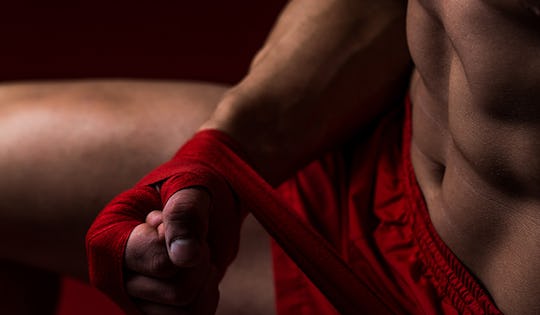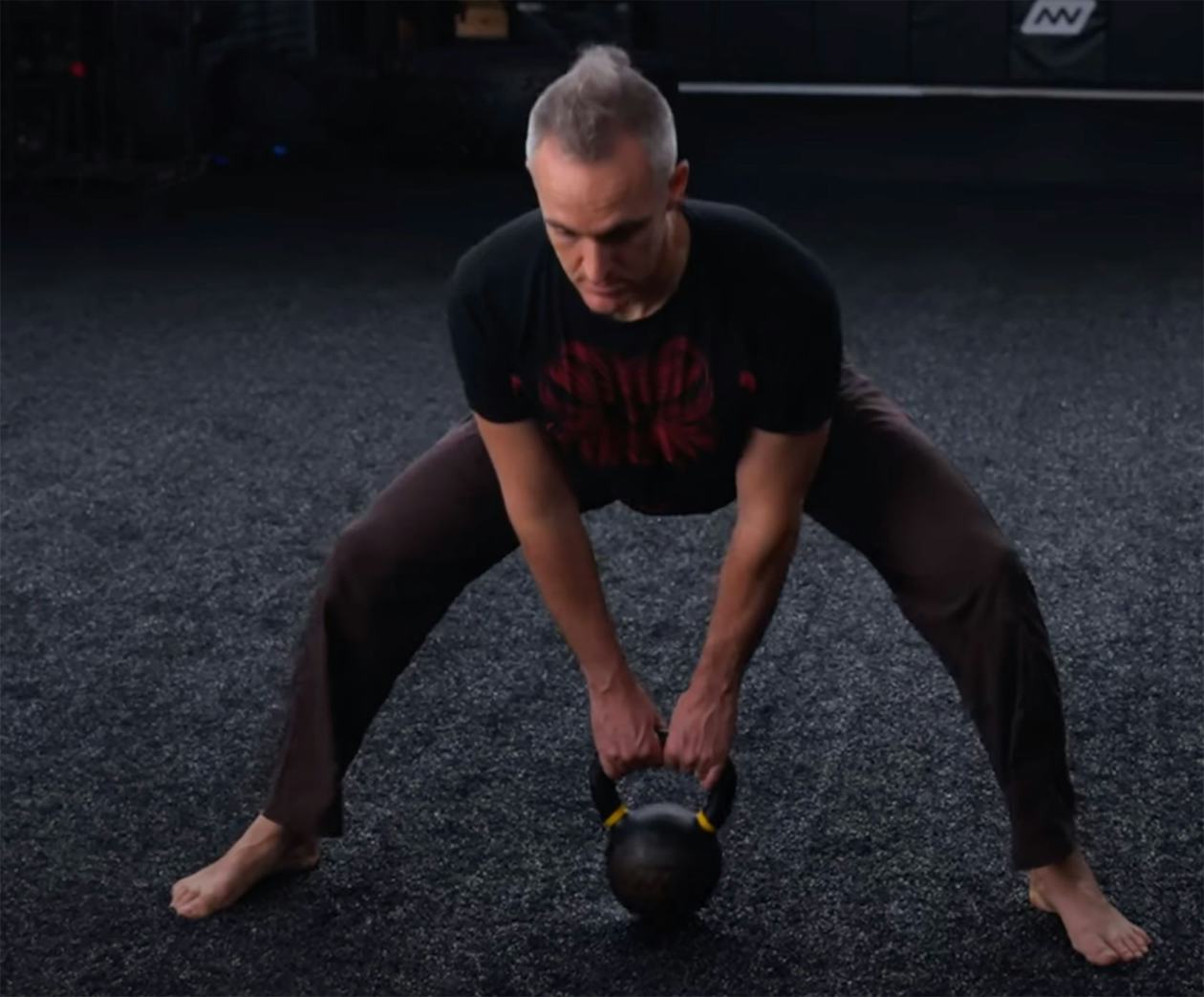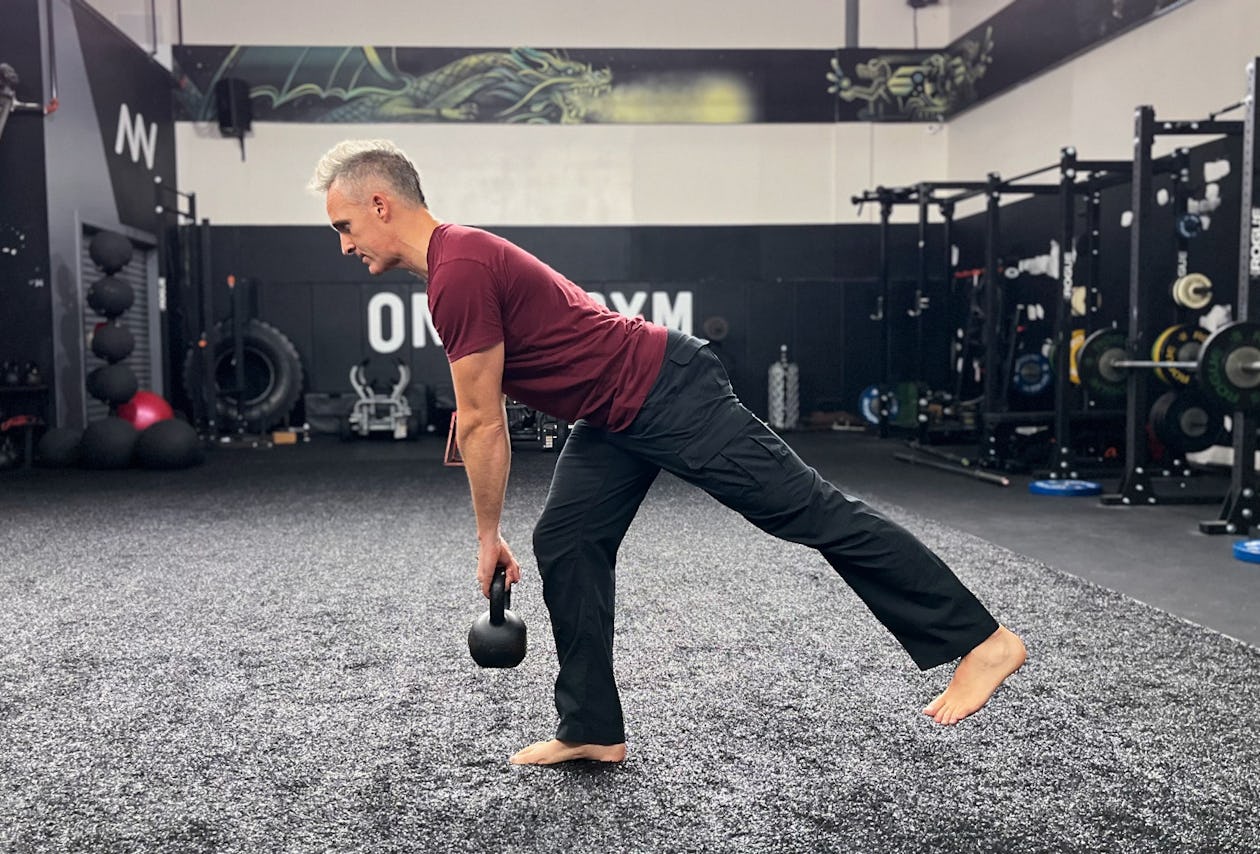As an MMA fighter, you need all the explosive strength and power that you can muster without adding an ounce of weight. That is exactly what this workout plan will do for you.
MMA Fighter Kettlebell Workout Plan Specs:
- Focus: Strength, Conditioning
- Difficulty: Moderate to Advanced
- Duration: 6 Weeks
- Equipment: Kettlebells, Battle Rings, Jump Rope
Kettlebells build uncanny strength throughout the body, but particularly in areas very important to MMA fighters, like grip and core strength.
It’s great if you can hit the guy, but what if you want to choke him out? A strong core is vital to any athlete, but especially those that plan on getting hit there!
As an MMA fighter you don’t have time to waste. Your training needs to be straight to the point and all about one thing: making you stronger in the ring.
Anything that takes away from this must be dropped without a second thought, especially when you are in the middle of a pre-fight training cycle.
This workout plan will help you build an iron core and shoulders that will last and last. The explosive strength you will develop will help you slam your opponents into the ground.
You decide the outcome of your next match right now by embarking on this 6 week program. Give it 100% and you will reap the benefits week by week.
MMA Fighter Kettlebell Workout Plan
|
WEEK |
MON |
TUE |
WED |
THU |
FRI |
SAT |
SUN |
|
1 |
Workout 1 |
Rest |
Workout 2 |
Rest |
Workout 3 |
Cardio 1 |
Rest |
|
2 |
Workout 1 |
Rest |
Workout 2 |
Rest |
Workout 4 |
Cardio 2 |
Rest |
|
3 |
Workout 1 |
Rest |
Workout 2 |
Rest |
Workout 3 |
Cardio 1 |
Rest |
|
4 |
Workout 1 |
Workout 2 |
Rest |
Workout 3 |
Rest |
Workout 4 |
Cardio 2 |
|
5 |
Workout 1 |
Workout 2 |
Rest |
Workout 3 |
Rest |
Workout 4 |
Cardio 1 |
|
6 |
Workout 1 |
Workout 2 |
Rest |
Workout 3 |
Rest |
Workout 4 |
Cardio 2 |

Kettlebell Workout 1: Strength Circuit
The first kettlebell workout is a strength circuit. MMA athletes must maintain full body strength while cutting weight during fight prep. This strength circuit combines kettlebell training sets that will hit your entire body. Kettlebell Workout 1 will not only increase strength with the use of kettlebells, but power up your endurance and increase mobility with the help of battle ring and jump rope training,
For Set A rest as little as possible between exercises, then rest 2 minutes between sets. For Set B perform two sets straight through with no rest, then rest 1-2 minutes between sets.
A1: Alternating Kettlebell Sots Press – 5 rounds x 8 reps (each side)
A2: Weighted Pull Up – 5 rounds x 8 reps
A3: Single Leg Kettlebell Deadlift – 5 rounds x 8 reps (each side)
A4: Alternating Kettlebell Floor Press – 5 rounds x 8 reps (each side)
A5: Double Kettlebell Front Squat – 5 rounds x 8 reps
A6: Hanging Ab Raises – 5 rounds x 8 reps
B1: Kettlebell Deck Squat to Alternating 1-Hand Sprawl – 4 rounds x 30 seconds
B2: Jump Rope – 4 rounds x 30 seconds
B3: Battle Ring Push Up – 4 rounds x 30 seconds
B4: Alternating Kettlebell Swing – 4 rounds x 30 seconds
B5: Hand Walkout – 4 rounds x 30 seconds
Kettlebell Workout 2: Explosive Power Circuit
To avoid the bodybuilder trap of becoming slow, tight, and inflexible, it is vital to work through a full range of motion keeping the reps low, the rest periods long, and lifts as explosive as possible. This is exactly what is accomplished with our second kettlebell workout. There’s no need to do more than eight reps and keep rest minimal to keep your heart rate at as maximal a level as possible while avoiding burnout.
For Set A rest 60 seconds between each exercise, then rest 60 seconds between sets. For Set B there is no rest between exercises, but you do get to rest 1-2 minutes between sets.
A1: Double Kettlebell Snatch – 5 rounds x 8 reps
A2: Kettlebell Jump Squat – 5 rounds x 8 reps
A3: Kettlebell Guerilla Clean – 5 rounds x 8 reps (each side)
A4: Explosive Kettlebell Pull Up – 5 rounds x 8 reps (each side)
A5: Explosive Kettlebell Push Up – 5 rounds x 8 reps
A6: Kip Up – 5 rounds x 8 reps
B1: Burpee – 3 rounds x 60 seconds
B2: Alternating Jump Pistol- 3 rounds x 60 seconds
B3: Jump Rope - 3 rounds x 60 seconds
Kettlebell Workout 3: Strength & Power 1
The third workout in our MMA inspired workout plan is a workout that will not only get you stronger, but will shred body fat and have you fit for a fight! Kettlebell Workout 3 is a strength and power training routine that combines battle rings and kettlebell training to form a unique high-intensity, strength workout, followed by a 5 exercise circuit that will increase aerobic capacity, aiding in preparation fat loss.
For Sets A-E complete all sets of each exercise before moving onto the next exercise, then rest 1-2 minutes between sets & exercises. For Set F there is no rest between exercises, but you do get to rest 2 minutes between sets. For Set F make sure to choose a weight that’s light enough to allow you to complete the entire set without stopping.
A: Weighted Ring Row – 3 rounds x 5 reps
B: Double Kettlebell Clean & Push Press – 3 rounds x 8 reps
C: Double Kettlebell Turkish Get Up – 3 rounds x 5 reps
D: Double Kettlebell Swing – 2 rounds x 10 reps
E: Double Overhead Walking Lunge – 2 rounds x 10 reps (each side)
F1: Battle Ring Fly – 3 rounds x 60 seconds
F2: Renegade Row – 3 rounds x 60 seconds
F3: Windmill (left) – 3 rounds x 60 seconds
F4: Windmill (right) – 3 rounds x 60 seconds
F5: Sprawl – 3 rounds x 60 seconds
Kettlebell Workout 4: Strength & Power 2
Kettlebell Workout #4 in your workout plan is another perfect workout to increase strength and power for your next fight. Kettlbell Workout #4 doesn’t just give you the necessary work for building strength, it also will increase your conditioning, using a compound kettlebell finisher with minimal rest. Paired with the right diet, it will melt fat before your next fight.
For Sets A-D complete each set as individual circuits. No rest between sets and 60 second rest between circuits. For the Kettlebell Finisher rest 30 seconds between each set.
A1: Alternating Kettlebell 2-Hand Anyhow – 4 rounds x 8 reps
B1: Kettlebell Pistol – 4 rounds x 5 reps (each side)
B2: Battle Ring Lawnmower Extension. 4 rounds x 5 reps (each side)
C1: Double Kettlebell Pull Over – 4 rounds x 8 reps
C2: Double Kettlebell Fly – 4 rounds x 8 reps
D1: Battle Ring Jump Squats 4 rounds x 20 reps
E: Double Kettlebell Clean & Jerk – 10 rounds x 30 seconds
Cardio Workout #1
The first cardio workout starts with a High Interval Training Set followed by a traditional low intensity aerobic output set. HIIT or interval training is a great technique which all athletes should be using. It jacks up the metabolism, increases your natural fat burning hormone (HGH), and simply helps you lose a lot more body fat than diet alone. Couple that with a aerobic capacity workout and you will be making weight in no time. Rest for 15 seconds between each 15 second jump rope set.
A: Jump Rope Sprint – 15 rounds x 15 seconds
B: Run – 1 round x 20 minutes
Cardio Workout #2
Cardio Workout #2 is another High Interval Training Set. But since we are performing a resisted sprint, you don’t want to add any other forms of output. Rest 1 minute between each set and run as fast as possible during each set. What I mean by consistent speed is sprint up the hill, then walk back down and rest 1 minute. Time each hill sprint and once you start getting slower on each sprint, record your number of reps and quit.
A: Hill sprints - Consistent speed x max rounds



